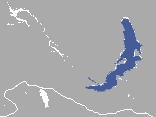Superregnum: Eukaryota
Cladus: Unikonta
Cladus: Opisthokonta
Cladus: Holozoa
Regnum: Animalia
Subregnum: Eumetazoa
Cladus: Bilateria
Cladus: Nephrozoa
Superphylum: Deuterostomia
Phylum: Chordata
Subphylum: Vertebrata
Infraphylum: Gnathostomata
Megaclassis: Osteichthyes
Cladus: Sarcopterygii
Cladus: Rhipidistia
Cladus: Tetrapodomorpha
Cladus: Eotetrapodiformes
Cladus: Elpistostegalia
Superclassis: Tetrapoda
Cladus: Reptiliomorpha
Cladus: Amniota
Cladus: Synapsida
Cladus: Eupelycosauria
Cladus: Sphenacodontia
Cladus: Sphenacodontoidea
Cladus: Therapsida
Cladus: Theriodontia
Cladus: Cynodontia
Cladus: Eucynodontia
Cladus: Probainognathia
Cladus: Prozostrodontia
Cladus: Mammaliaformes
Classis: Mammalia
Subclassis: Trechnotheria
Infraclassis: Zatheria
Supercohors: Theria
Cohors: Eutheria
Infraclassis: Placentalia
Cladus: Boreoeutheria
Superordo: Laurasiatheria
Cladus: Scrotifera
Cladus: Ferungulata
Cladus: Ferae
Cladus: Pancarnivora
Cladus: Carnivoramorpha
Cladus: Carnivoraformes
Ordo: Carnivora
Subordo: Caniformia
Infraordo: Arctoidea
Cladus: Pan-Pinnipedia
Cladus: Pinnipedimorpha
Cladus: Pinnipediformes
Parvordo: Pinnipedia
Superfamilia: Phocoidea
Familia: Phocidae
Genus: Pusa
Species: P. caspica - P. hispida - P. sibirica
Name
Pusa Scopoli, 1771
References
Pusa in Mammal Species of the World.
Wilson, Don E. & Reeder, DeeAnn M. (Editors) 2005. Mammal Species of the World – A Taxonomic and Geographic Reference. Third edition. ISBN 0-8018-8221-4.
Pusa is a genus of the earless seals, within the family Phocidae. The three species of this genus were split from the genus Phoca, and some sources still give Phoca as an acceptable synonym for Pusa.
The three species in this genus are found in Arctic and subarctic regions, as well as around the Caspian Sea. This includes these countries and regions: Russia, Finland, Scandinavia, Britain, Greenland, Canada, the United States, Iran, Azerbaijan, Kazakhstan, and Japan. Due to changing local environmental conditions, the ringed seals found in the Canadian region has varied patterns of growth. The northern Canadian ringed seals grow slowly to a larger size, while the southern seals grow quickly to a smaller size.
Only the Caspian seal species of Pusa is endangered, while two subspecies of the ringed seal are vulnerable and endangered, Ladoga seal and Saimaa ringed seal respectively.
Taxonomy
Pusa
Ringed seal
Baikal seal
Caspian seal
Cladogram showing relationships among the extant members of genus Pusa, combining several phylogenetic analyses.[2]
Species
| Common name | Scientific name and subspecies | Range | Size and ecology | IUCN status and estimated population |
|---|---|---|---|---|
| Caspian seal
|
Pusa caspica (Gmelin, 1788) |
Caspian Sea |
Size: about 126–129 cm (50–51 in) in length. Adults weigh around 86 kg (190 lb)[3] Habitat: Diet: crustaceans and various fish species, such as Clupeonella engrauliformis, C. grimmi, C. caspia, Gobiidae, Rutilus caspicus, Atherina boyeri, and Sander lucioperca[4] |
EN
|
| Ringed seal
|
Pusa hispida (Schreber, 1775)
Five subspecies
|
northern coast of Japan in the Pacific, and throughout the North Atlantic coasts of Greenland and Scandinavia as far south as Newfoundland, and include two freshwater subspecies in northern Europe |
Size: 100 to 175 cm (39.5 to 69 in) and weigh from 32 to 140 kg (71 to 309 lb).[5] The seal averages about 5 ft (1.5 m) long with a weight of about 50–70 kg (110–150 lb)[6] Habitat: Diet: mysids, shrimp, arctic cod, and herring[6] |
LC |
| Baikal seal or nerpa
|
Pusa sibirica Gmelin, 1788 |
Lake Baikal in Siberia, Russia |
Size: Habitat: Diet: |
LC
|
|---|
References
Wilson, D. E.; Reeder, D. M., eds. (2005). Mammal Species of the World: A Taxonomic and Geographic Reference (3rd ed.). Johns Hopkins University Press. ISBN 978-0-8018-8221-0. OCLC 62265494.
Berta, A.; Churchill, M. (2012). "Pinniped taxonomy: Review of currently recognized species and subspecies, and evidence used for their description". Mammal Review. 42 (3): 207–34. doi:10.1111/j.1365-2907.2011.00193.x.
T.A. Jefferson; S. Leatherwood; M.A. Webber. "Marine Mammals of the World: Caspian seal (Phoca caspica)". species-identification.org. Retrieved 7 December 2022.
Khuraskin, L.; Pochotoyeva, N. (1997). "Status of the Caspian Seal Population". Caspian Environment Program: 86–94.
[1] (2011)
Office of Protected Resources - NOAA Fisheries. "Ringed Seal (Phoca hispida)". accessed 11 March 2010.
Ferguson, Steven H.; et al. (2018). "Geographic Variation in Ringed Seal (Pusa Hispida) Growth Rate and Body Size". Canadian Journal of Zoology. 96 (7): 649–659. doi:10.1139/cjz-2017-0213.
Retrieved from "http://en.wikipedia.org/"
All text is available under the terms of the GNU Free Documentation License




